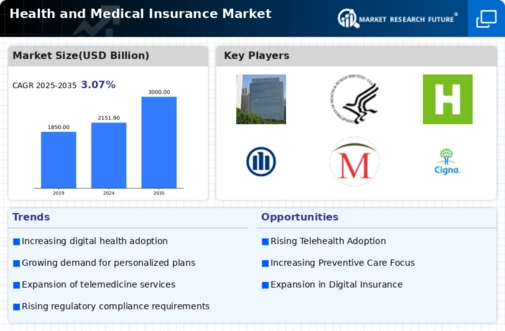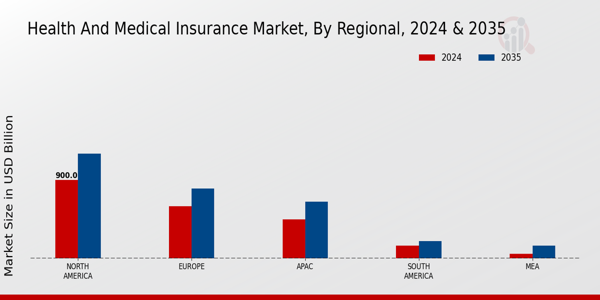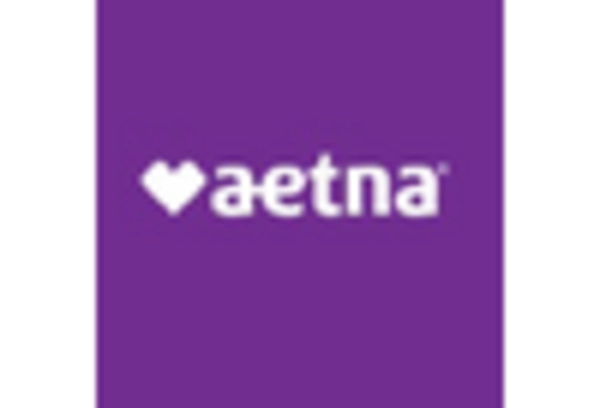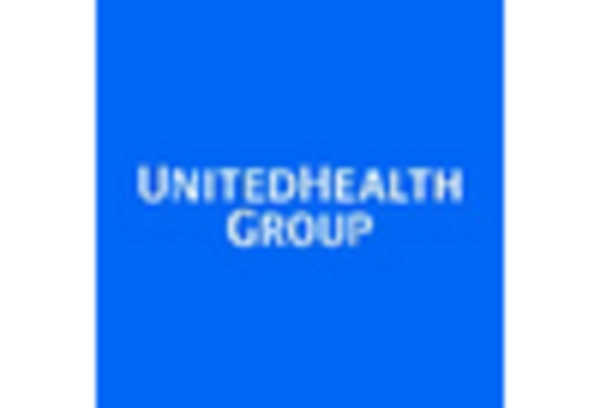Aging Population
The demographic shift towards an aging population is significantly influencing the Health and Medical Insurance Market. As the proportion of elderly individuals increases, there is a corresponding rise in the demand for healthcare services and insurance products tailored to this demographic. The World Health Organization indicates that the number of people aged 60 years and older is expected to double from 12 percent to 22 percent of the global population by 2050. This trend necessitates the development of insurance plans that address the unique health needs of older adults, including chronic disease management and long-term care. Consequently, insurers are adapting their offerings to cater to this growing segment, thereby driving growth in the Health and Medical Insurance Market.
Regulatory Changes
Regulatory changes play a crucial role in shaping the Health and Medical Insurance Market. Governments worldwide are implementing policies aimed at expanding access to healthcare and improving the quality of services. For example, mandates for essential health benefits and protections against discrimination based on pre-existing conditions have led to an increase in insurance enrollment. These regulations not only enhance consumer protection but also stimulate competition among insurers, driving innovation in product offerings. As regulatory frameworks evolve, they will continue to impact the dynamics of the Health and Medical Insurance Market, compelling insurers to adapt their strategies to comply with new requirements while meeting consumer expectations.
Technological Advancements
Technological advancements are reshaping the landscape of the Health and Medical Insurance Market. Innovations such as telemedicine, wearable health devices, and electronic health records are enhancing the efficiency and accessibility of healthcare services. These technologies not only improve patient outcomes but also facilitate better risk assessment and management for insurers. For instance, the integration of data analytics allows insurers to tailor their products to meet the specific needs of consumers, thereby increasing customer satisfaction and retention. As technology continues to evolve, it is likely that the Health and Medical Insurance Market will witness further transformation, with insurers leveraging these advancements to create more personalized and effective insurance solutions.
Increasing Healthcare Costs
The rising costs associated with healthcare services are a primary driver in the Health and Medical Insurance Market. As expenses for medical treatments, hospital stays, and prescription medications continue to escalate, individuals and families are increasingly seeking insurance coverage to mitigate these financial burdens. According to recent data, healthcare spending has been projected to grow at an annual rate of approximately 5.4 percent, which underscores the necessity for comprehensive insurance plans. This trend compels consumers to invest in health insurance policies that offer extensive coverage, thereby propelling the demand within the Health and Medical Insurance Market. Insurers are responding by developing innovative products that cater to the evolving needs of consumers, ensuring that they remain competitive in a market characterized by rising costs.
Rising Awareness of Health Issues
There is a growing awareness of health issues among consumers, which is significantly impacting the Health and Medical Insurance Market. As individuals become more informed about the importance of preventive care and early intervention, they are increasingly seeking insurance products that provide comprehensive coverage for a wide range of health services. This trend is reflected in the rising demand for policies that include preventive screenings, wellness programs, and mental health services. Insurers are responding to this shift by enhancing their offerings to include these essential services, thereby attracting a broader customer base. The heightened awareness of health issues is likely to continue driving growth in the Health and Medical Insurance Market as consumers prioritize their health and well-being.


















Leave a Comment